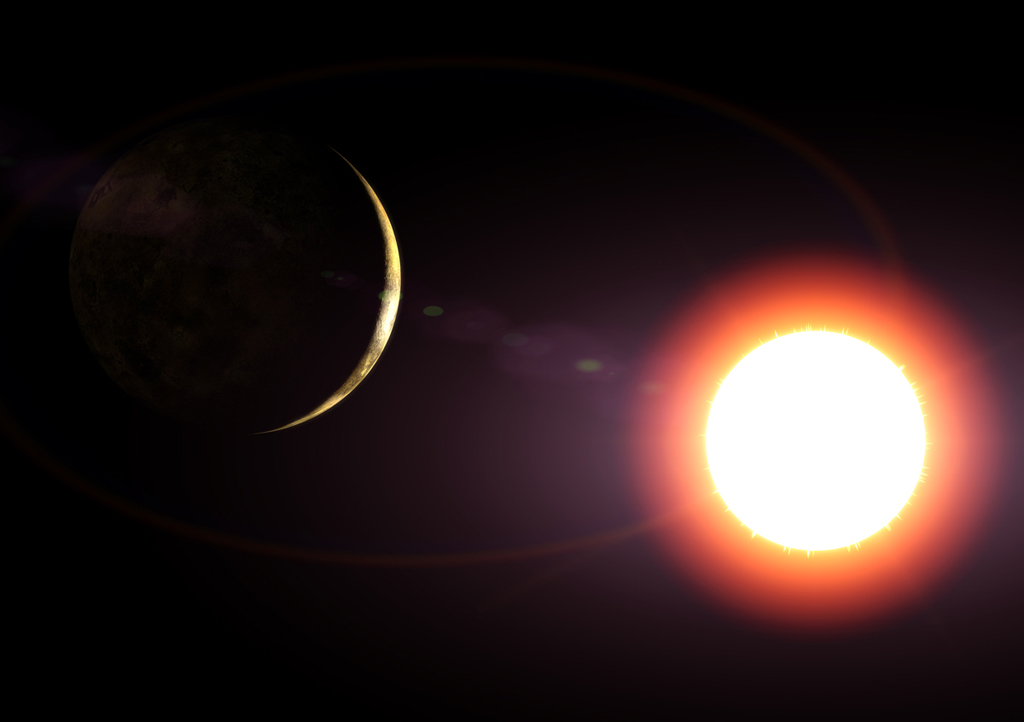Project Blue: A small space telescope to search for exoplanets in the Alpha Centauri system

The closest star system to Earth is Alpha Centauri . It attracts the attention of astronomers throughout our planet for a long time. There are not one star in this system, but three at once: α Centaurus A, α Centauri B and α Centauri C. The smallest of the three is α Centauri C. As it turned out, there is a potentially inhabitable exoplanet near it.
There are ecoplanets and two other stars, and scientists are very eager to observe them. Perhaps there is life on these planets too. So far, it is impossible to prove or disprove this, since observing exoplanets for humans is an extremely difficult task. NASA has repeatedly stated the need to monitor this region. And now, it seems, these plans can be implemented.
| α Centaurus A | α Centauri B | Proxima Centauri | |
|---|---|---|---|
| Absolute magnitude | 4.38 | 5.71 | 15.53 |
| Spectral class | G2V | K1V | M5,5Ve |
| Luminosity (in solar) | 1.519 | 0.5 | 6 · 10 −5 |
| Diameter (in solar) | 1,227 | 0.865 | 0.14 |
| Distance to the Sun, sv. years old | 4.36 | 4.22 | |
Only not by the agency, but by a group of scientists who are going to launch a small optical telescope into Earth’s orbit, which allows us to observe the ecoplanets of the nearest star system. Moreover, these scientists say that the telescope does not need to be made huge, and the device is relatively small in size. The authors of the idea say that such a telescope will no longer be an ordinary washing machine. The project to create such a system will be quite long, but by the end of this decade, exoplanets will be within the “optical reach”. The name of the new project is Project Blue.
')

Pale Blue Dot ("pale blue dot"). Source: NASA
This name he received thanks to the famous picture Pale Blue Dot , obtained by "Voyager" in 1980. The goal of the new project is to obtain similar images for exoplanets from the inhabited zone of stars α Centauri A and α Centauri B. “We do not consider it possible to get a detailed photo of exoplanets, but there is every chance that we can get a photo similar to Pale Blue Dot”, - said John Morse, one of the participants and initiators of Project Blue.

Unlike the Kepler telescope, which tracks hundreds of thousands of stars in search of a weak change in their luminosity (which may be a sign of the presence of an exoplanet in a star periodically changing its brightness), the new telescope will provide scientists with high-contrast photos of the star system. The telescope of the new design will include a coronagraph, which will block the light of the stars, which will allow to detect faintly luminous objects in the orbit of these stars. As mentioned above, we are talking only about observing the α Centauri star system.
Unfortunately, such a telescope will not be able to observe the potentially inhabited planets in the orbits of α Centauri C. This star is much colder than its "sisters", and it is almost impossible to observe its planets from the Earth. Plus, if the star's exoplanet is very close to it (and most likely it is), then the coronagraph will not help block the light of the star to produce an image of the planet.
Interestingly, scientists do not yet have evidence that α Centaurus A and α Centaurus B have planets in the habitable zone. Perhaps such planets exist, but no one is sure. It is precisely known that α Centauri B has a planet, which, however, is located very close to the star. So, most likely, this is a hot world, located outside the habitable zone of its star, on which there is no life. The exoplanet was discovered by the Kepler telescope in 2012.
The authors of Project Blue claim that the telescope of their proposed design will be able to detect the presence of exoplanets in the size from 0.5 to 1.5 times the diameter of the Earth, which are located in the habitable zone of their stars. “Considering the information received from the Kepler telescope, the probability of the existence of a planet in the habitable zone of α Centauri A and α Centauri B is about 80%,” says Morse. The estimated duration of the tool in orbit is 2 years.
Not a telescope single
In April of this year, at a press conference in New York, the idea of a project to send a large number of probes to Alpha Centauri, which should be engaged in the study of this star system, was announced . One of the tasks is the search and detailed study of exoplanets. Within the framework of this project, it is planned to launch the spacecraft, which is to put spacecraft of much smaller size into orbit. From the ground, the solar sails of these devices will be affected by a laser beam. Laser probes will accelerate to high speed, which allows you to reach the goal not for thousands, but for decades. In total, Alpha Centauri plans to send 1,000 miniature probes.
Obtained during the trip data such devices will transmit using the same laser. The solar sail will be the antenna. The structure of the probe is simple - it is a camera, a solar sail, a laser data transmission system and a plutonium battery.
This project has a number of unresolved issues. The main one is technical difficulties. A person does not yet have all the technologies (or they have not reached the required level of development) for the implementation of this project. According to The Economist, the project will be possible only after the improvement of a number of modern technologies by several orders of magnitude . Other problems include the need to protect the apparatus from elementary particles and cosmic dust encountered in open space.
Source: https://habr.com/ru/post/398283/
All Articles